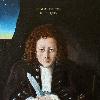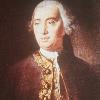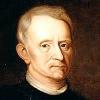

As no contemporary portrait of Robert Hooke seems to have survived from the seventeenth century, this one is a reconstruction from the descriptions by his colleagues Aubrey and Waller. It shows him with a spring, pocket Topics: Entertainment Tags: Robert Hooke View |
3 ?????? ??? Robert Hooke ? 1665 ???? ?????? ??? ???????? ???????? ??? ??? ????????? ??????????? ?????? Tags: Robert Hooke View |
Fazioli Robert Hooke was an experimental scientist who lived in seventeenth century England where he Mac Wallpaper Publications Custom Photos Image Use Contact Us Search Home Abou t Hooke Robert Hooke was perhaps one of the most The Robert Hooke Exhibition Contact Details Book Online At the Planetarium Images Photos Show Details Testimonials First Light Access Custom Tags: Robert Hooke View |
|||||||||
Robert Hooke FRS (Fellow of the Royal Society) (18 July 1635 - 3 March 1703) was an English (English people) natural philosopher, architect and polymath who played an important role in the scientific revolution, through both experimental and theoretical work.
His adult life comprised three distinct periods: as a brilliant scientific inquirer lacking money; achieving great wealth and standing through his reputation for hard work and scrupulous honesty following the great fire of 1666 (Great Fire of London) (section:Hooke the architect) (#Hooke the architect), but eventually becoming ill and party to jealous intellectual disputes. These issues may have contributed to his relative historical obscurity (section: Personality and disputes) (#Personality and disputes).
Hooke is known for his law of elasticity (Hookes law), his book, Micrographia, and for first applying the word "cell (cell (biology))" to describe the basic unit of life. Even now there is much less written about him than might be expected from the sheer industry of his life: he was at one time simultaneously the curator of experiments of the Royal Society and a member of its council, Gresham Professor of Geometry and a Surveyor to the City of London after the Great Fire of London, in which capacity he appears to have performed more than half of all the surveys after the fire. He was also an important architect of his time, though few of his buildings now survive and some of those are generally misattributed, and was instrumental in devising a set of planning controls for London whose influence remains today. Allan Chapman (Allan Chapman (historian)) has characterised him as "Englands Leonardo (Leonardo da Vinci)".
Hooke studied at Wadham College during the Protectorate (The Protectorate) where he became one of a tightly-knit group of ardent Royalists centred around John Wilkins. Here he was employed as an assistant to Thomas Willis and to Robert Boyle, for whom he built the vacuum pumps used in Boyles gas law experiments. He built some of the earliest Gregorian telescopes, observed the rotations of Mars and Jupiter, and, based on his observations of fossils, was an early proponent of biological evolution (theory of evolution). He investigated the phenomenon of refraction, deducing the wave theory of light, and was the first to suggest that matter expands when heated and that air is made of small particles separated by relatively large distances. He performed pioneering work in the field of surveying and map-making and was involved in the work that led to the first modern plan-form map, though his plan for London on a grid system was rejected in favour of rebuilding along the existing routes. He also came near to deducing that gravity follows an inverse square law, and that such a relation governs the motions of the planets, an idea which was subsequently developed by Newton. Much of Hookes scientific work was conducted in his capacity as curator of experiments of the Royal Society, a post he held from 1662, or as part of the household of Robert Boyle.
Hooke was also irascible, at least in later life, proud, and prone to take umbrage with intellectual competitors, though he was by all accounts also a staunch friend and ally and was loyal always to the circle of ardent Royalists with whom he had his early training at Wadham College, particularly Christopher Wren. His reputation suffered after his death and this is popularly attributed to a dispute with Isaac Newton over credit for his work on gravitation and to a lesser degree light; Newton, as President of the Royal Society, did much to obscure Hooke, including, it is said, destroying (or failing to preserve) the only known portrait of the man. It did not help that the first life of Wren, Parentalis (Parentalia, or, Memoirs of the family of the Wrens), was written by Wrens son, and tended to exaggerate Wrens work over all others. Hookes reputation was revived during the twentieth century through studies of Robert Gunther and Margaret Espinasse, and after a long period of relative obscurity he is now recognized as one of the most important scientists of his age.
Date of birth: 1635-07-18
Birth Location: Freshwater, Isle of Wight, Freshwater, Isle of Wight, England
Date of death: 1703-03-03
Death Location: London, England
Ethnicity: English
Fields: Physics and chemistry
Workplaces: Oxford University
Alma Mater: Christ Church, Oxford
Academic Advisors: Robert Boyle
Known For: Hooke's Law , Microscopy , applied the word 'cell (cell (biology))'
Influences: Richard Busby



